Gaining space in the dental arch is the most important step in treatment planning, which can be achieved by different methods, one of which is molar distalization.
By Dr Geoffrey Hall
The most frequent dentoskeletal disharmony is the Class II malocclusion. This distoclusion may be the result of a retrognathic mandible, of a prognathic maxilla or a combination of both.
Dentally, the mesiobuccal cusp of the first upper molar occludes in front of the buccal sulcus of the first lower molar. The disadvantage of this lies in the lack of available space in the upper dental arch, creating the need to utilize appliances that can generate or stretch the available space in order to act distally and transversely. There are many non-extraction treatment modalities for Class II malocclusion. One of them consists of converting the Class II molar relation into a Class I molar relation by distally displacing the upper first molars.
Indications and Contraindication for Molar Distalization
| Unilateral or bilateral Dental Class II relation. Class I skeletal, Class II or end-to-end molar relationship (due to maxillary protrusion but mandible is of normal length). | Patients with Class I or class III molar relation Patient with retrognathic profile |
| Increased overjet (up to 5 mm). Increased overbite (deep bite). | Patients with open bite tendency (skeletal or dental) |
| Normo- or hypodivergent patients / Short lower face height | Dolichocephalic patients/ Excessive lower face height. |
| Midline discrepancy. Mild to Moderate crowding (mild arch length discrepancy. | Severe arch length discrepancy patients |
| Patients with early mixed or permanent dentition. | Patients with vertical growth pattern High mandibular plane angle. |
| Low to moderate mandibular plane angle | |
| Patients with minimal skeletal problems / with upper dentoalveolar protrusion / Impacted or highly placed cuspids. | |
| Gaining space (loss of arch length) due to premature loss of deciduous teeth. Patients that do not accept extractions. | |
| Favourable maxillary 2nd molar position, Maxillary first molar mesially inclined. | |
| Second molar extraction cases where the third molars are well formed and erupting properly. |
Diagnosis
Confirm the diagnosis of a forward maxillary molar
To check the centric relation position, vertical status and the TMJ status.
Radiographic Assessment
- Skeletal convexity and growth prediction helps to differentiate between a forward maxilla and a backward mandible.
- In growing patient, growth prediction must be made to determine what the possible convexity would be with time and growth.
- Absence of upper 3rd molars offers better prognosis.
- Posterior crowding as indicated by distal angulation of the molars makes distalization unsuitable.
Criteria for Case Selection
- Late mixed dentition
- Normal or near normal mandibular arch
- Dental Class II with skeletal Class I
- 3rd molars absent
- Profile considerations — well-developed nose and chin
- High MPA — Contraindicated
- Space discrepancy — not very severe.
Basic Recommendations for Distalization
In a growing child
- To relieve mild crowding
- Causes permanent increase in arch length of about 2mm on each side.
Late mixed dentition
- Upper molars are distalized to get a Class I relation.
- End on molar relationship with mild to moderate space requirement.
- Cases with a full cusp Class II molar relationship.
- Class I malocclusion with highly placed or impacted canine.
- Lack of space for eruption of premolars due to mesial migration of permanent first molars
- Good soft tissue profile
- Borderline cases
- Mild to moderate space discrepancy with missing 3rd molars / 2nd molars not yet erupted
- Normal or hypo-divergent growth pattern.
In young patients, the best moment to distalize is before the second molars are totally erupted. The upper second molars erupt normally without impaction; meanwhile the second premolar follows the first molar distally.
Mixed or permanent dentition
- Recommend the extraction of the third molars.
- Distalizers can provoke an undesired upper first molar rotation.
- Use Class II elastics in order to reduce anterior proclination.
- After the distalization is completed, place a moderate or maximum anchorage to the distalized molars.
Classification
| Location of the appliance: • Extra-oral • Intra-oral | Position of appliance in mouth: • Buccal • Palatal | Type of appliance • Removable • Fixed |
| Compliance needed from patient: • Maximum compliance • Minimum or no compliance | Type of tooth movement: • Bodily movement • Tipping movement | Arches involved: • Intra-arch • Inter-arch |
Distalizing Appliances
One of the first appliances used for molar distalization was the Headgear, used by Angle in 1887.
In 1968, Kloehn proposed the early treatment with the head gear to redirect the growth of the maxilla and exert a slight force on the teeth that must be moved. The objective of Kloehn was to distalize the upper molars in order to obtain a functional relation with the lower teeth.
Graber noticed that, when extra-oral traction was used upon the first upper molar, considering the fact that the second upper molar had not fully erupted, the first molar inclined distally but did not move in a bodily manner.
In order to prevent the inclination of the molar, Cetlin in 1983 combined the extra-oral force with an intraoral force. He used the first force partially and the intraoral force (with removable appliances) was used full time. The force of the removable appliances, used constantly, inclines the crown distally and the head gear controls the position of the root, resulting in a bodily movement of the molar.
The principle of extra-oral distalization is that the line of action must pass through the centre of resistance of the molar. In order to accomplish a successful distalization treatment, the amount of force applied, and the time of use are very important.
Various Appliances used for Molar Distalization
1.Extra-oral Appliances
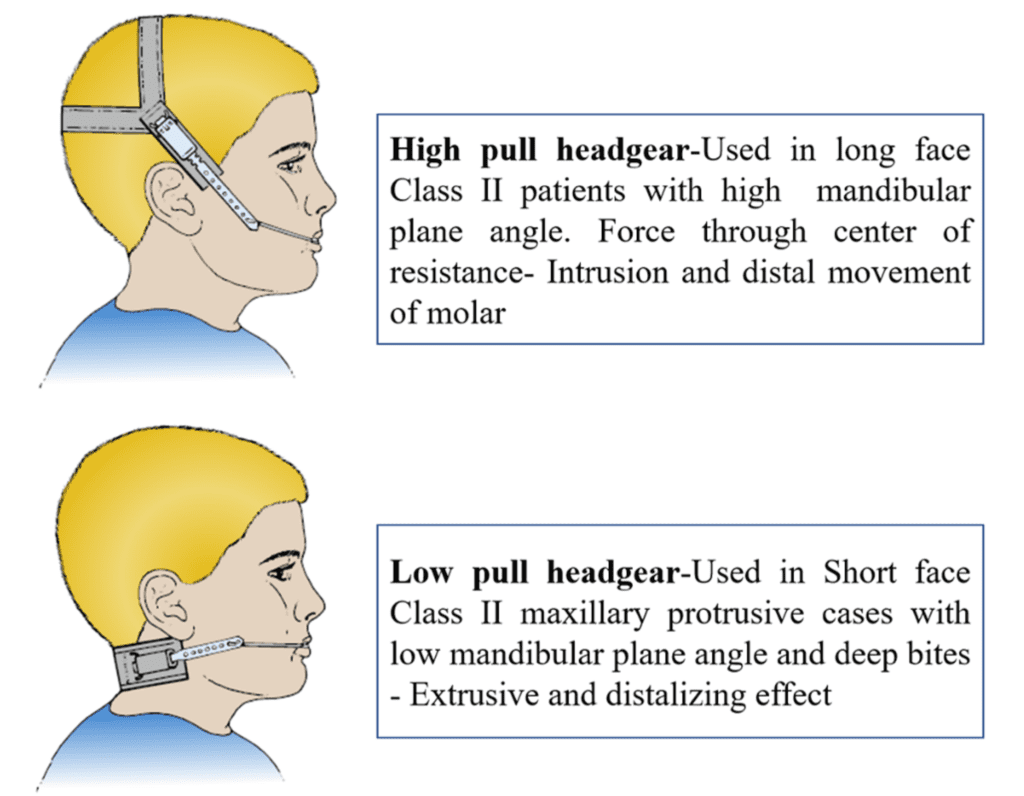
2. Intra-oral Appliances
ACCO appliance — acrylic cervical occipital anchorage
• Intramaxillary
• Palatal
• Removable
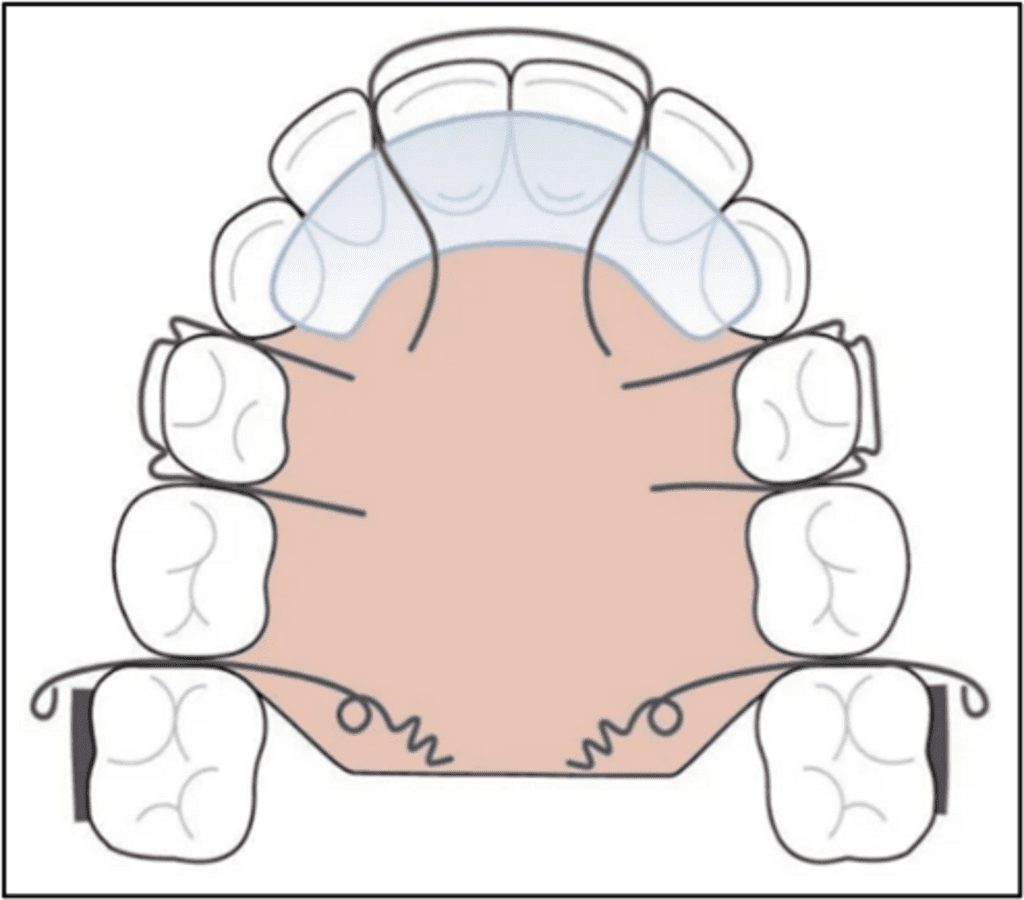
Bimetric distalizing arch with Class II elastics
• Intermaxillary
• Buccal
• Fixed
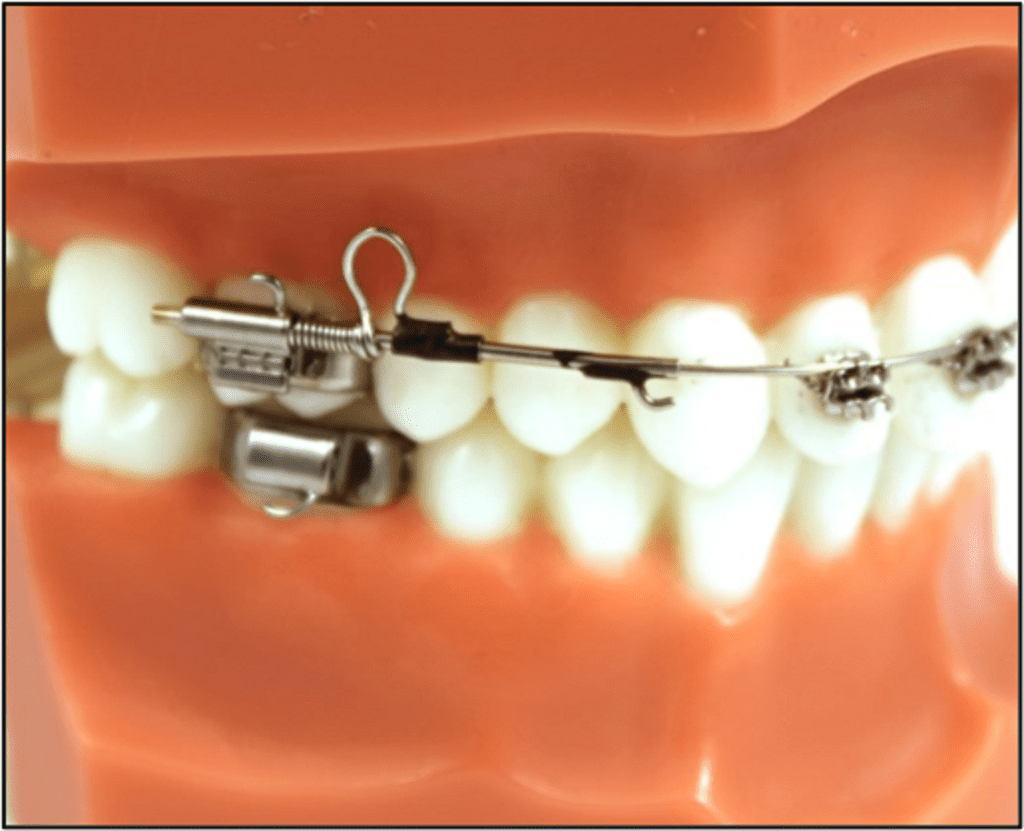

Cetlin appliance
• Intramaxillary
• Palatal
• Removable

Distal jet appliance
• Intramaxillary
• Palatal
• Fixed

Magnets
• Intramaxillary
• Buccal
• Fixed
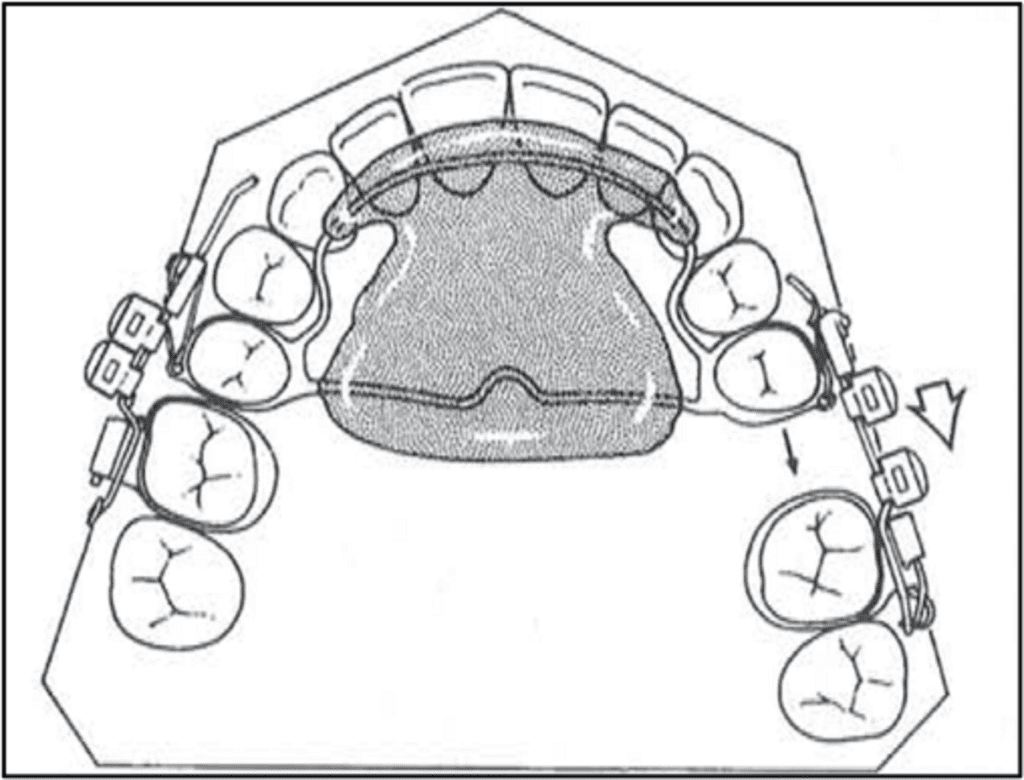
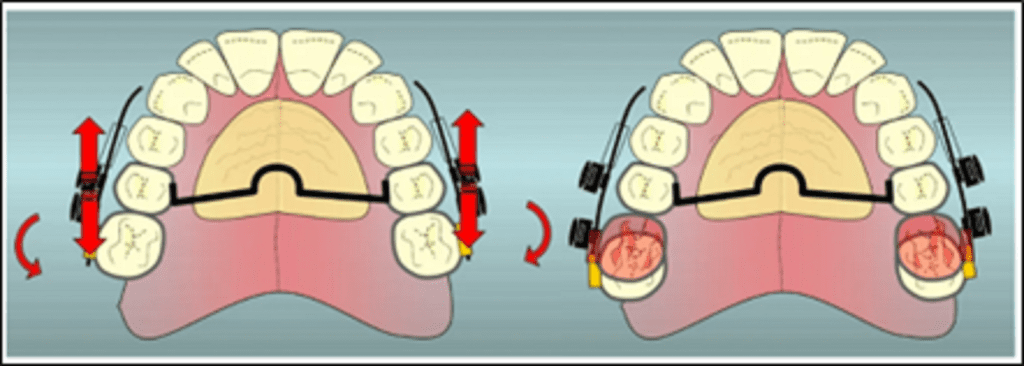
Fixed piston appliance
• Intramaxillary
• Buccal and Palatal
• Fixed
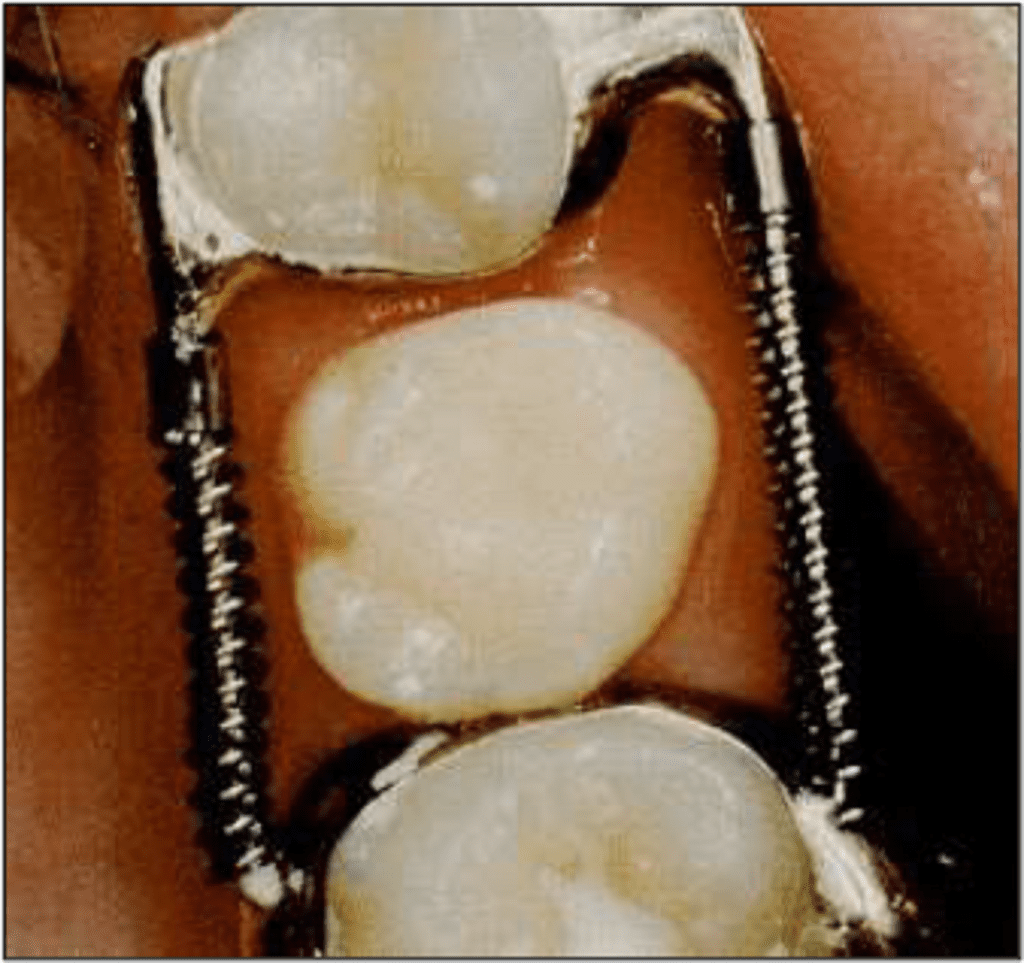
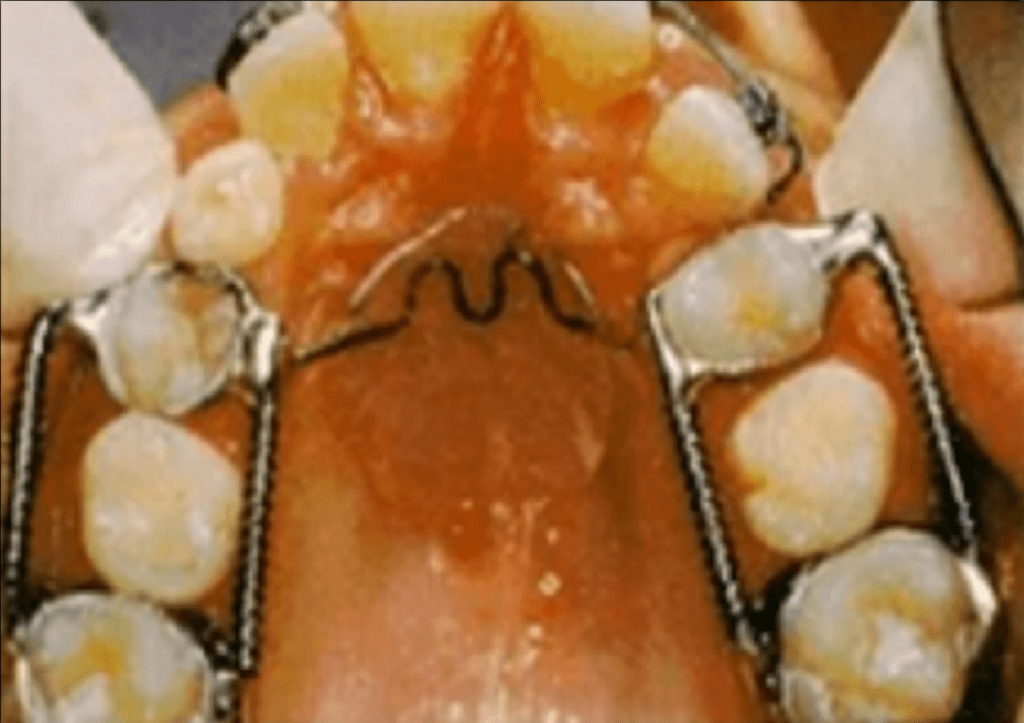
First class appliance
- Intramaxillary
- Buccal and Palatal
- Fixed
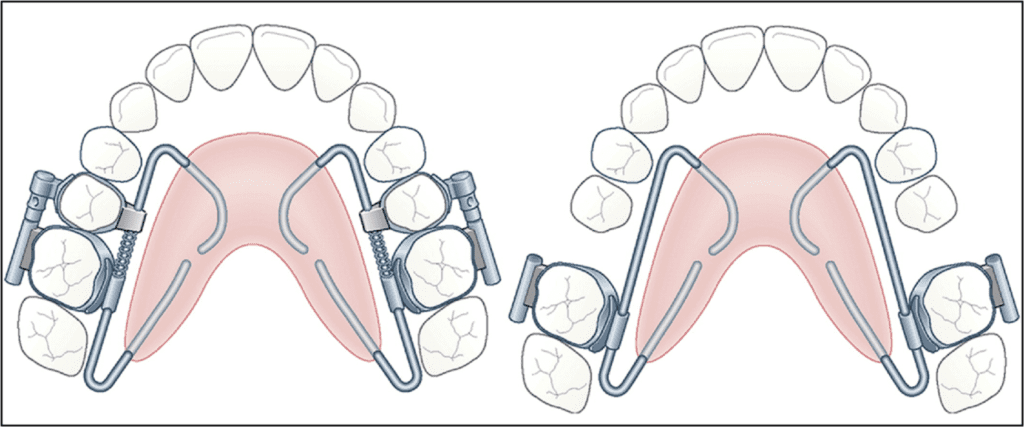
Herbst appliance
- Intermaxillary
- Buccal
- Fixed

Jones jig
• Intramaxillary
• Buccal
• Fixed

K-loop molar distalizer
• Intramaxillary
• Buccal
• Fixed
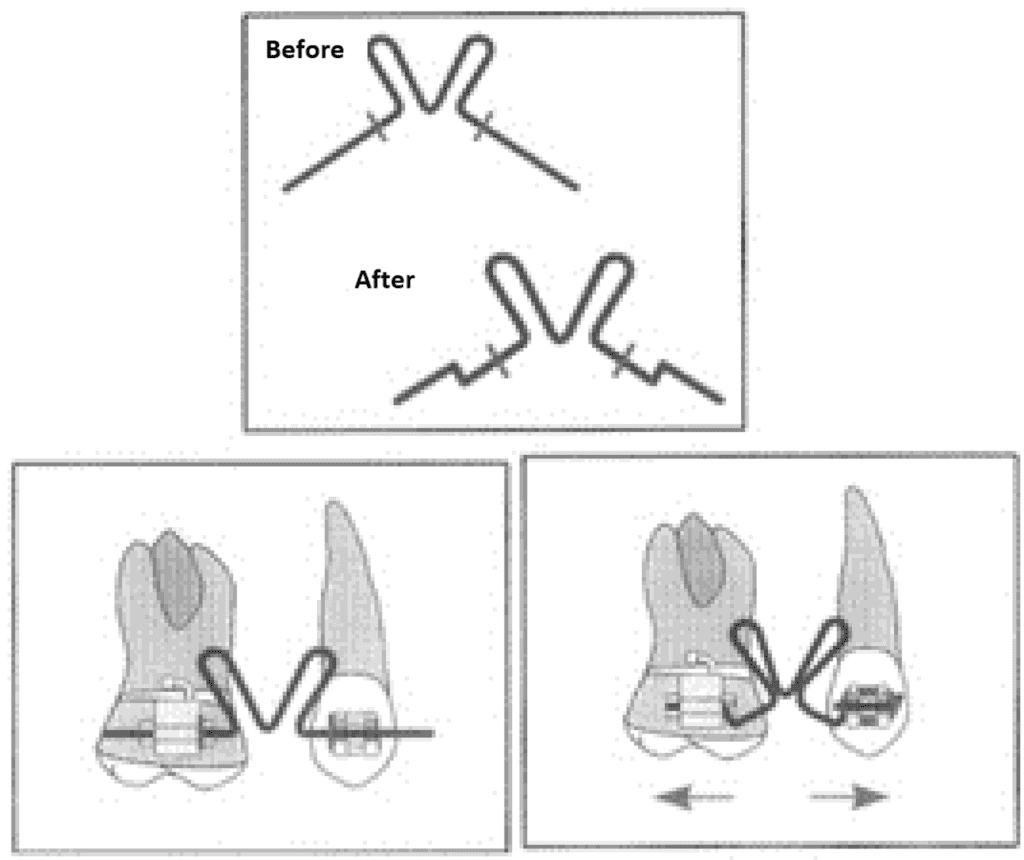
Lokar molar distalizer
• Intramaxillary
• Buccal
• Fixed
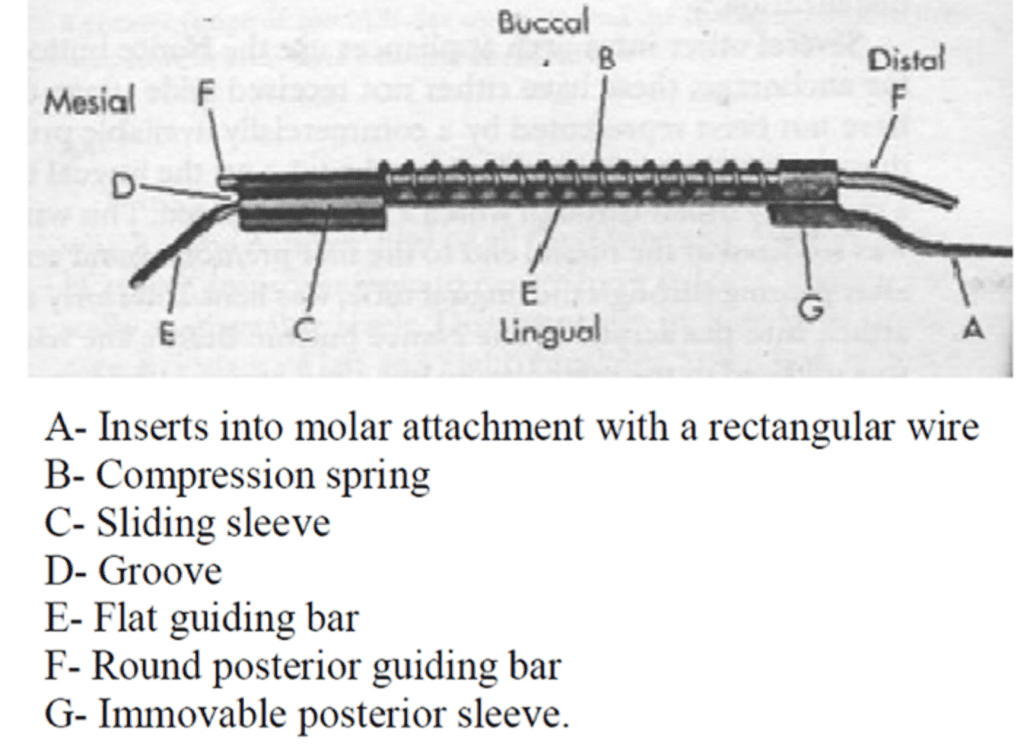
Pendulum appliance
• Intramaxillary
• Palatal
• Fixed

Klapper Super Spring II
• Intermaxillary
• Buccal
• Fixed

Superelastic nickel titanium wire
• Intramaxillary
• Buccal
• Fixed

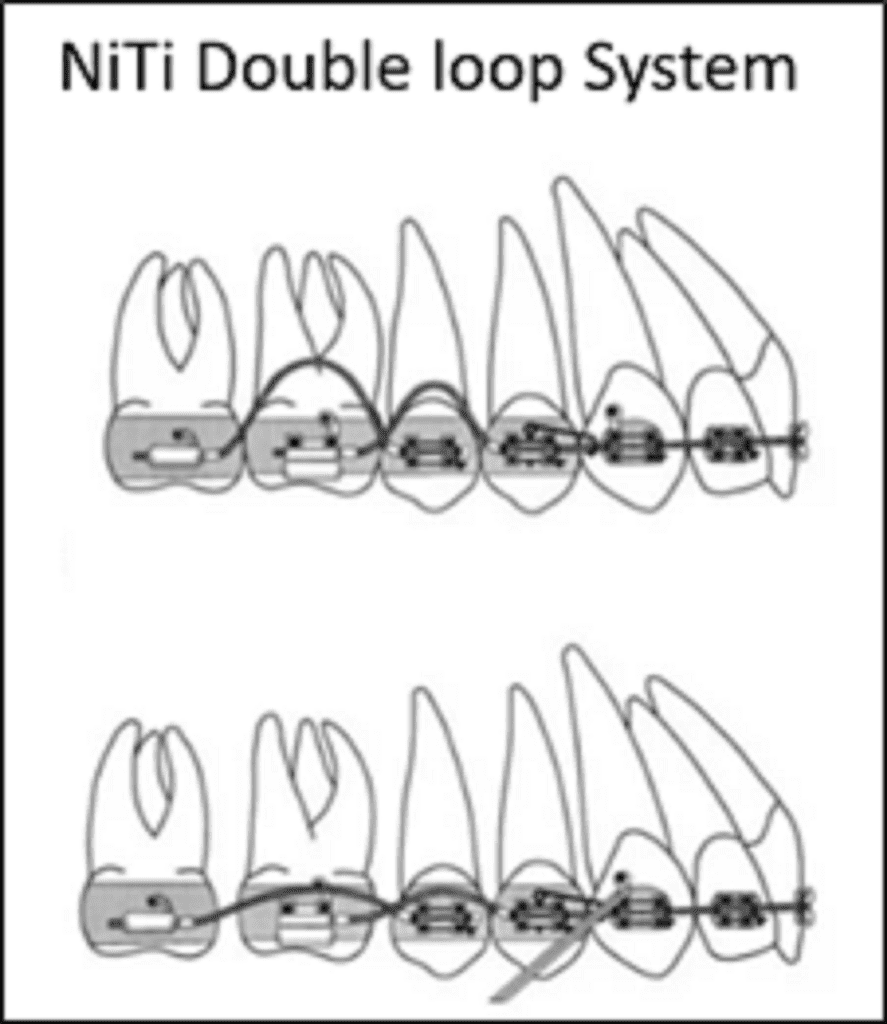
Compressed Springs/ NiTi coil springs
• Intermaxillary
• Buccal
• Fixed
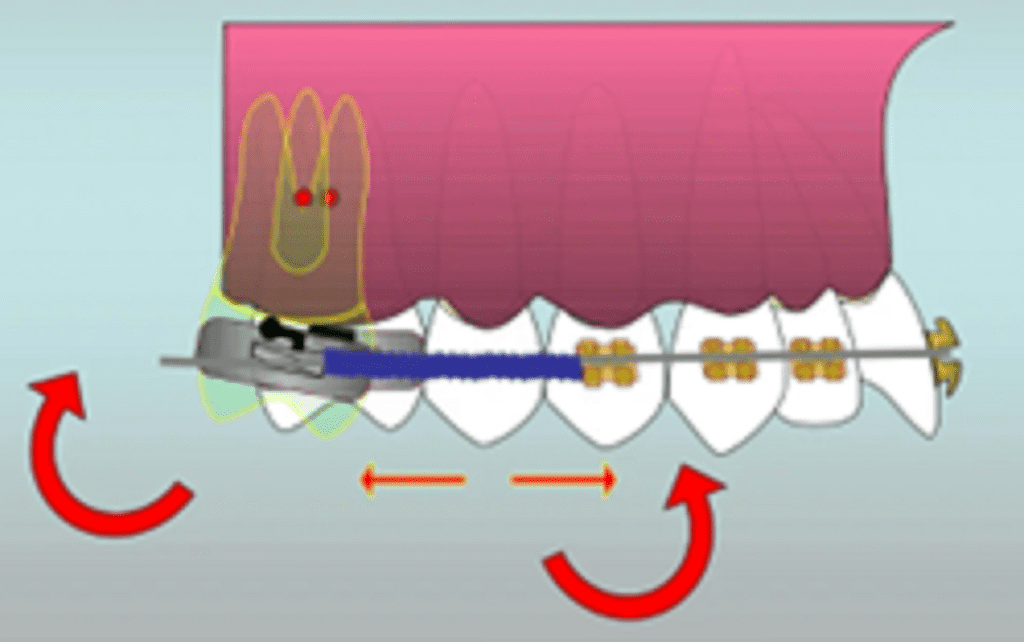
Mini-distalizing Appliance (MDA)
• Intramaxillary
• Palatal
• Fixed
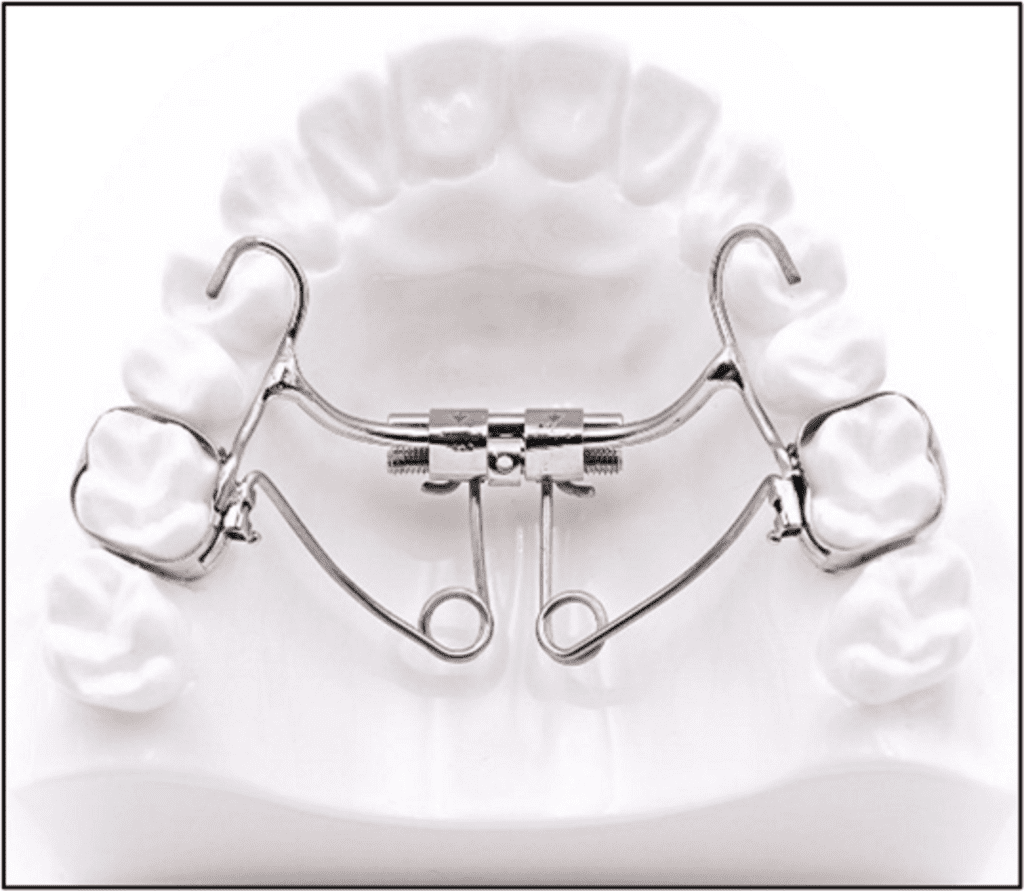
Open Coil Jig
• Intermaxillary
• Buccal
• Fixed
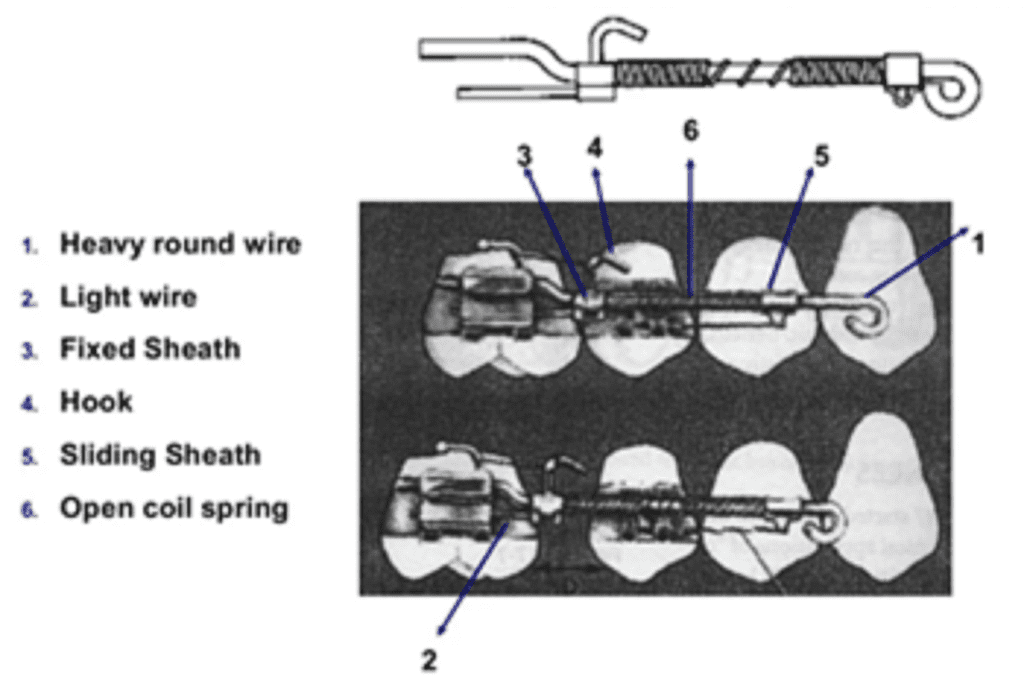
Franzulum appliance
• Mandible
• Lingual
• Fixed

Lip bumper
• Mandible
• Buccal
• Fixed/Removable

Miniscrew Implant Supported Distalization System (MISDS)
• Intramaxillary
• Buccal/Palatal
• Fixed
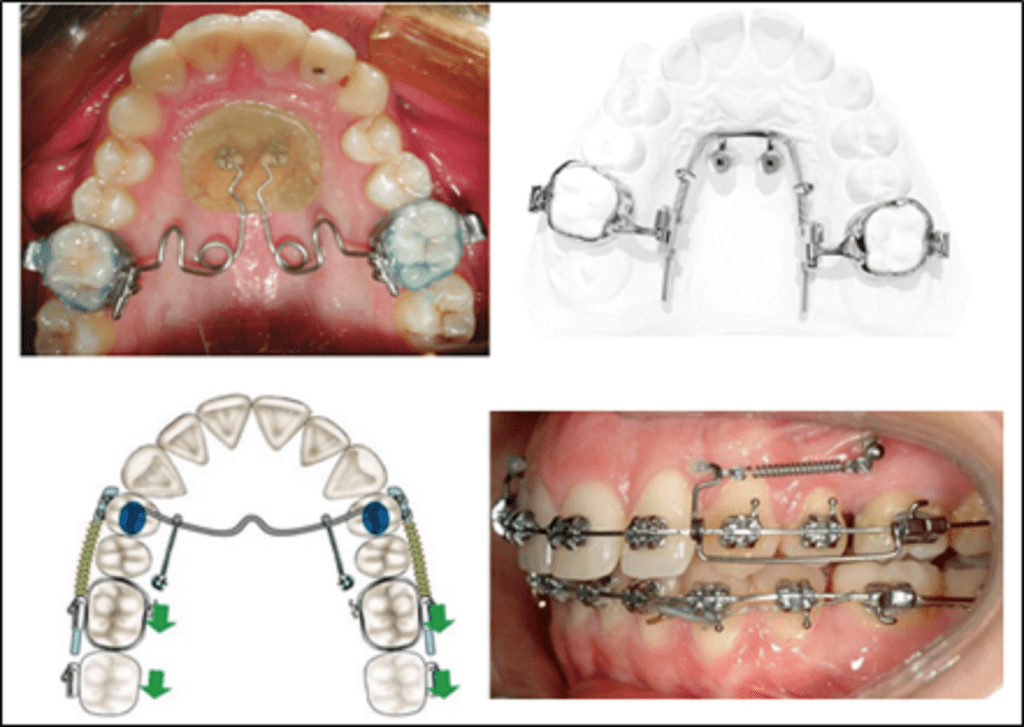
Treatment Planning
The treatment approach is divided into two phases.
➢ Objectives of the first phase — space gaining phase:
- To distalize the upper molars bodily so that the patients will occlude in Super Class – I occlusion (i.e., over corrected).
- To achieve generalized spacing through dento-alveolar widening and growth.
- To correct molar inclination, rotation and crossbite.
➢ Objectives of the second phase — consolidation phase are:
• Andrews’ six keys to normal occlusion.
• Overbite, overjet and all dental malpositions are corrected.
General Considerations
a) Force Direction
- Proffit described the amount of force for bodily movement of molar is 100–120 gm and approximately 50–60 gm for tipping movement.
- Continuous forces are preferable to intermittent or interrupted forces.
- Should be along the arch form.
- Should be as close to the centre of resistance of the molar as possible.
- Extra-oral forces consideration — Tenenbaum suggests 12 ounces or 300 g, a force that can be incremented. Muir and Reed recommend 500 g per side. The extra-oral traction must be worn for at least 12 hours a day, but preferably between 14 to 16 hours a day on average. During distalization we must be sure the molars do not have any occlusal interferences. In case there are, we should place an anterior bite plane in order to aid in the distalization.
b) Anchorage Considerations
- Since perfect bodily movement is almost never achieved, at the end of the distalization, a distally tipped molar results. Loss of space may occur during its uprighting. Hence, maximum control and bodily movement of the molar is desired during distalization.
- Tendency of the molar to return mesially, particularly if 2nd molars are present.
- Molars are not used as anchorage for at least 4–5 months after they have been moved distally.
c) Collateral Effects of Distalizers
- They procline the anterior segment.
- Bodily distal movement is difficult.
- They produce condyle deflection.
- Premature points in the palatine cusps.
- Due to the hinge effect,some appliances produce a mandibular posterior rotation that will result in an anterior open bite.
- According to William Wilson in 1978, molar distalization should not be done before 11 years of age as the maxillary tuberosity enters its rapid growth phase which may lead to second and third molar impaction.
The use of the extra-oral arch can provoke many movements:
1. A distal force and a flattening of the occlusal plane, in which the extra-oral traction must be applied over the centre of resistance of the molar.
2. A distal force and a settlement of the occlusal plane, in which the extra-oral traction must be applied under the centre of resistance of the molar.
3.A distal force without changes of the occlusal plane, in which the extra-oral traction passes through the centre of resistance of the molar.
The distalizing appliance must include the following characteristics:
- Must not require patient cooperation.
- High degree of biomechanical control.
- Compact design.
- Minimal interference when the patient eats or speaks.
- Absence of pain during the distalizing process.
- Easy activation.
- Compatibility with other orthodontic techniques.
- Automatic cessation of the distalizing movement.
- Must be easy to clean.
Conclusion
Newer and better methods of molar distalization are being developed, especially since the advent of miniscrews into clinical Orthodontics. However, it is in the hands of the clinician to thoroughly analyse the clinical picture and select the appropriate molar distalizing appliance.

Dr Geoffrey Hall is an influential orthodontist, author, and international speaker. He has been a central figure in the field of orthodontics in Australia and worldwide for decades. Dr Hall received his dental training from the University of Melbourne in 1983 and completed his postgraduate orthodontic training at the University of Pennsylvania in 1990.
Dr Hall practices at a busy clinic in Melbourne, specialising in various orthodontic treatments, including early treatment, conventional adolescent therapy, short-term orthodontics (Smilefast), aligner therapy (such as Invisalign), lingual braces, and interdisciplinary treatment.
As an esteemed educator, Dr Hall has taught at the University of Melbourne and the University of Pennsylvania. He has been a consultant orthodontist at the Craniofacial Unit of Monash Medical Centre. In 2018, he established the OrthoED Institute to provide comprehensive orthodontic training to general dentists.
The information and viewpoints presented in the above news piece or article do not necessarily reflect the official stance or policy of Dental Resource Asia or the DRA Journal. While we strive to ensure the accuracy of our content, Dental Resource Asia (DRA) or DRA Journal cannot guarantee the constant correctness, comprehensiveness, or timeliness of all the information contained within this website or journal.
Please be aware that all product details, product specifications, and data on this website or journal may be modified without prior notice in order to enhance reliability, functionality, design, or for other reasons.
The content contributed by our bloggers or authors represents their personal opinions and is not intended to defame or discredit any religion, ethnic group, club, organisation, company, individual, or any entity or individual.

